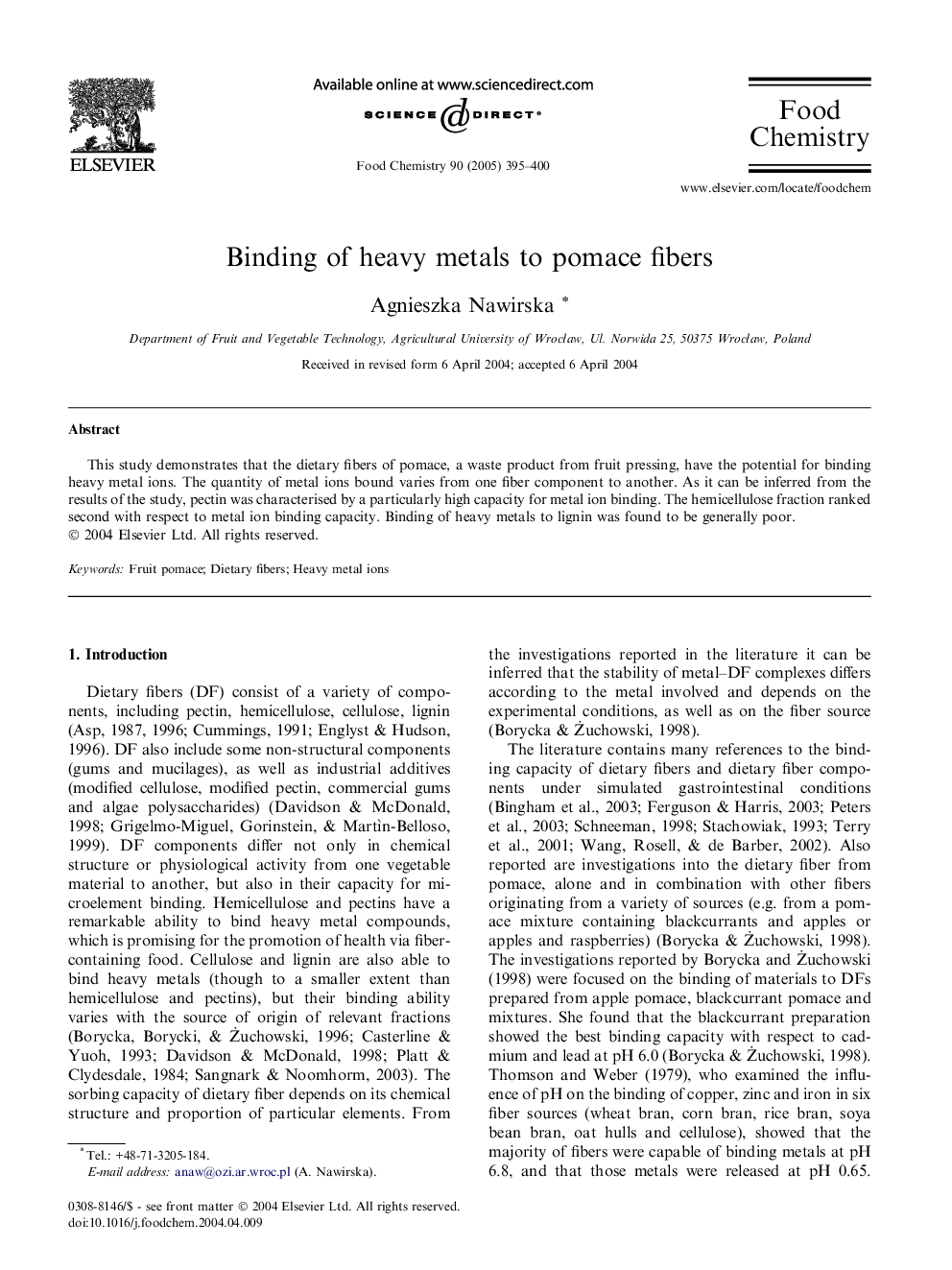| Article ID | Journal | Published Year | Pages | File Type |
|---|---|---|---|---|
| 10544223 | Food Chemistry | 2005 | 6 Pages |
Abstract
This study demonstrates that the dietary fibers of pomace, a waste product from fruit pressing, have the potential for binding heavy metal ions. The quantity of metal ions bound varies from one fiber component to another. As it can be inferred from the results of the study, pectin was characterised by a particularly high capacity for metal ion binding. The hemicellulose fraction ranked second with respect to metal ion binding capacity. Binding of heavy metals to lignin was found to be generally poor.
Related Topics
Physical Sciences and Engineering
Chemistry
Analytical Chemistry
Authors
Agnieszka Nawirska,
